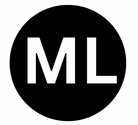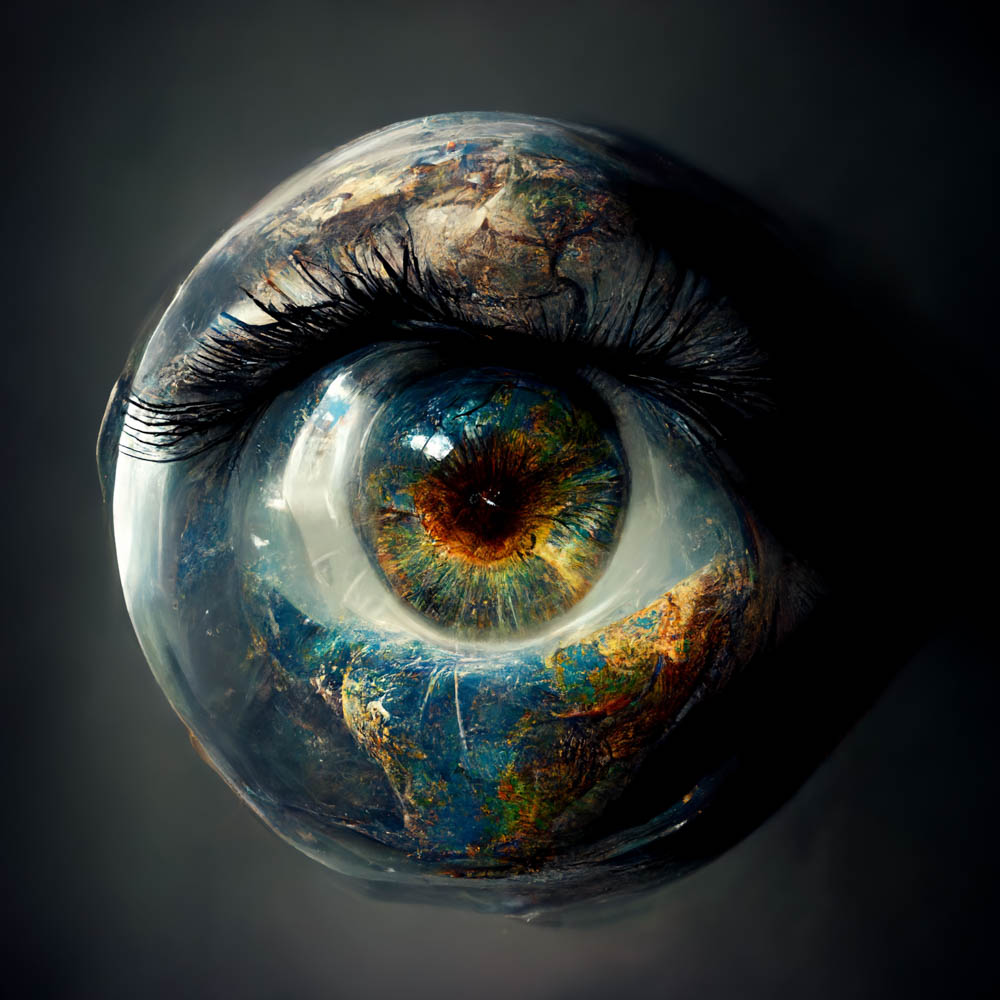Grundlagendokument zur Sinnökonomie Worpswede
Ein Essay über Bedeutung, Resonanz und die neue Kultur des Menschlichen
I. Vom Lärm zur Tiefe
Wir leben in einer Zeit, in der alles gesagt ist, aber fast nichts mehr gemeint.
Die Welt produziert unaufhörlich Zeichen, Bilder, Meinungen, Posts, Daten –
doch das, was uns verbindet, ist nicht Information, sondern Sinn.
Sinn ist das, was trägt, was Bedeutung erzeugt, was ein Werk, ein Wort oder eine Geste lebendig macht.
Doch diese Energieform – die Energie des Sinns –
ist im digitalen Zeitalter zum knappsten Gut geworden.
Wir sind überreich an Daten, aber arm an Deutung.
Wir haben Zugang zu allem, aber Verbindung zu fast nichts.
Inmitten dieser Übersättigung wächst die Sehnsucht nach Tiefe.
Das ist der Punkt, an dem Kunst, Bewusstsein und Wirtschaft wieder zusammenfinden müssen.
Denn dort, wo das Ökonomische keinen Sinn mehr trägt,
wo Wachstum nichts mehr erklärt,
sucht das Kapital nach Bedeutung wie ein Ertrinkender nach Luft.
II. Die Geburt der Sinnökonomie
Sinn lässt sich nicht herstellen – er entsteht, wenn Bedeutung Tiefe gewinnt.
Ich nenne das: Sinnproduktion durch Bedeutungstiefe.
Es ist das Gegenteil von Marketing,
denn hier geht es nicht darum, Aufmerksamkeit zu erzeugen,
sondern Resonanz zu ermöglichen.
Eine Sinnökonomie unterscheidet sich von einer Aufmerksamkeitsökonomie wie
ein Gespräch von einem Werbespot.
Das eine sucht Verbindung,
das andere Wirkung.
In der Aufmerksamkeitsökonomie gewinnt, wer lauter ist.
In der Sinnökonomie gewinnt, wer stiller, klarer, wahrhaftiger ist.
Denn Tiefe ist magnetisch.
Sie zieht an, ohne zu rufen.
Sinn hat eine Schwerkraft.
Er bindet Menschen, Ideen und sogar Kapital,
weil er Verlässlichkeit und Richtung schenkt.
Das, was Bedeutung trägt, wird dauerhaft –
alles andere rauscht vorbei.
III. Worpswede als Experiment des Sinns
Worpswede ist seit seiner Gründung ein Ort, an dem Menschen versuchten,
dem Leben einen tieferen Sinn zu geben –
durch Kunst, Gemeinschaft und eine andere Art des Daseins.
Heute steht dieser Ort wieder an einer Schwelle:
zwischen technischer Übermacht und kultureller Erneuerung.
Ich sehe Worpswede als Labor für eine neue Ökonomie des Sinns.
Nicht als Rückzugsort aus der Welt,
sondern als Quelle, aus der die Welt sich wieder nähren kann.
Hier könnte entstehen, was in den großen Systemen verloren gegangen ist:
das Bewusstsein, dass Kultur nicht Ware ist, sondern Resonanzraum.
Eine Galerie ist dann kein Verkaufsraum mehr,
sondern ein Ort der Schwingung zwischen Menschen, Dingen und Bedeutungen.
Ein Bild ist kein Produkt, sondern eine Tiefenstruktur von Erfahrung.
Und ein Gespräch ist keine PR,
sondern ein Moment gemeinsamer Bewusstwerdung.
IV. Kapital und Kunst – eine neue Anziehung
Kapital flieht dort, wo Sinn verloren geht.
Doch überall dort, wo Sinn entsteht,
kehrt Kapital zurück – in anderer Form,
langsamer, geduldiger, mit Seele.
Die Sinnökonomie ist kein romantischer Gegenentwurf zum Markt,
sondern seine nächste, reifere Entwicklungsstufe.
Denn Geld ist letztlich geronnene Aufmerksamkeit –
und Aufmerksamkeit folgt dem, was Bedeutung erzeugt.
Deshalb kann ein Ort wie Worpswede
nicht nur Künstler anziehen, sondern auch Kapital,
das etwas sucht, das größer ist als Rendite:
Bedeutung.
Nachhaltigkeit.
Rückbindung.
Wenn Kunst, Bewusstsein und Kapital wieder denselben inneren Zweck teilen –
nämlich Sinn zu schaffen –,
dann entsteht eine Wirtschaft, die das Leben nicht verbraucht,
sondern nährt.
V. Die Pull-Strategie des Bewusstseins
Wir brauchen keine Werbung, keine Kampagnen, keine Kämpfe.
Push ist Lärm.
Pull ist Gravitation.
In der Sinnökonomie geht es darum, so echt zu sein, dass man gesucht wird.
Ein Feld aufzubauen, das Menschen, Ideen und Investitionen anzieht,
nicht durch Manipulation,
sondern durch Echtheit.
Die Aufgabe ist nicht, die Welt zu überzeugen,
sondern Räume zu öffnen, in denen sie sich erinnert.
Menschen, die Sinn suchen, finden den Weg selbst.
Was echt ist, muss nicht schreien.
VI. Das Netzwerk der Tiefe
Das semantische Netz, das wir heute aufbauen,
ist kein technisches Projekt, sondern eine Schule des Bewusstseins.
Es soll zeigen, dass Daten, wenn sie mit Achtung gepflegt werden,
wieder Träger von Sinn sein können.
Jedes Kunstwerk, jede Geschichte, jedes Gespräch wird Teil einer Struktur,
in der sich Bedeutungen gegenseitig reflektieren.
Das ist die digitale Entsprechung dessen,
was Gemeinschaft im Analogen einmal war.
Es entsteht ein Netz der Tiefe, kein Netz der Schnelligkeit.
Ein Raum, in dem Resonanz wichtiger ist als Reichweite.
Ein System, das nicht optimiert, sondern bewusst macht.
VII. Ein neuer Gesellschaftsvertrag
Was wir in Worpswede beginnen,
kann ein Modell werden für eine neue Balance
zwischen Kultur, Technik und Wirtschaft.
Ein Gesellschaftsvertrag, in dem Menschen ihre Daten, ihre Geschichten,
ihre Kreativität nicht mehr verschenken,
sondern bewusst teilen – als Beitrag zu einem lebendigen Ganzen.
Das ist kein Luxus, sondern Überlebensstrategie.
Denn in einer Welt, in der Maschinen denken und Roboter handeln,
wird das einzig Menschliche das sein,
was Sinn trägt, Bedeutung hat, Bewusstsein weckt.
VIII. Schluss: Die Einladung
Ich glaube, dass wir in einer Wendezeit leben.
Nicht die Maschinen bedrohen uns,
sondern die Leere, die sie spiegeln, wenn wir aufhören zu deuten.
Doch dort, wo Menschen wieder beginnen,
Sinn zu erzeugen statt nur Inhalte,
beginnt eine neue Zivilisation.
Eine, in der Kunst, Sprache, Raum und Technologie
nicht gegeneinander arbeiten,
sondern einander vertiefen.
Die Sinnökonomie Worpswede ist kein Geschäftsmodell.
Sie ist ein Anfang.
Ein Versuch, Tiefe wieder gesellschaftsfähig zu machen.
„Was nicht verbindet, vergeht.
Was Bedeutung hat, bleibt.“
Worpswede, 2025
Markus Lippeck
Worpswede Meaning Economy
Basic document on the Worpswede Meaning Economy
An essay on meaning, resonance, and the new culture of humanity
I. From noise to depth
We live in a time when everything has been said, but almost nothing is meant anymore.
The world incessantly produces signs, images, opinions, posts, data –
but what connects us is not information, but meaning.
Meaning is what sustains, what creates significance, what brings a work, a word, or a gesture to life.
But this form of energy – the energy of meaning –
has become the scarcest commodity in the digital age.
We are overflowing with data, but poor in interpretation.
We have access to everything, but connection to almost nothing.
Amidst this oversaturation, the longing for depth grows.
This is the point at which art, consciousness, and economics must come together again.
For where economics no longer carries meaning,
where growth no longer explains anything,
capital seeks meaning like a drowning man seeks air.
II. The Birth of the Meaning Economy
Meaning cannot be manufactured—it arises when significance gains depth.
I call this meaning production through depth of meaning.
It is the opposite of marketing,
because it is not about generating attention,
but about enabling resonance.
A meaning economy differs from an attention economy like
a conversation differs from a commercial.
One seeks connection,
the other seeks impact.
In the attention economy, the one who is louder wins.
In the meaning economy, the winner is the one who is quieter, clearer, and more truthful.
Because depth is magnetic.
It attracts without calling out.
Meaning has a gravitational pull.
It binds people, ideas, and even capital
because it provides reliability and direction.
That which carries meaning becomes permanent –
everything else rushes by.
III. Worpswede as an experiment in meaning
Since its founding, Worpswede has been a place where people have tried to
give life a deeper meaning—
through art, community, and a different way of being.
Today, this place is once again at a crossroads:
between technological supremacy and cultural renewal.
I see Worpswede as a laboratory for a new economy of meaning.
Not as a retreat from the world,
but as a source from which the world can nourish itself again.
Here, what has been lost in the large systems could emerge:
the awareness that culture is not a commodity, but a resonance chamber.
A gallery is then no longer a sales room,
but a place of vibration between people, things, and meanings.
A picture is not a product, but a deep structure of experience.
And a conversation is not PR,
but a moment of shared awareness.
IV. Capital and art – a new attraction
Capital flees where meaning is lost.
But wherever meaning arises,
capital returns – in a different form,
slower, more patient, with soul.
The meaning economy is not a romantic alternative to the market,
but its next, more mature stage of development.
For money is ultimately coagulated attention –
and attention follows what creates meaning.
That is why a place like Worpswede
can attract not only artists, but also capital
that is looking for something greater than returns:
meaning.
Sustainability.
Connection.
When art, consciousness, and capital once again share the same inner purpose—
namely, to create meaning—
an economy emerges that does not consume life,
but nourishes it.
V. The pull strategy of consciousness
We don’t need advertising, campaigns, or battles.
Push is noise.
Pull is gravity.
The meaning economy is about being so authentic that people seek you out.
Building a field that attracts people, ideas, and investment
not through manipulation,
but through authenticity.
The task is not to convince the world,
but to open spaces in which it remembers.
People who seek meaning find the way themselves.
What is authentic does not need to shout.
VI. The network of depth
The semantic network we are building today
is not a technical project, but a school of consciousness.
It aims to show that data, when treated with respect,
can once again be a carrier of meaning.
Every work of art, every story, every conversation becomes part of a structure
in which meanings reflect each other.
This is the digital equivalent of
what community once was in the analog world.
A network of depth is emerging, not a network of speed.
A space where resonance is more important than reach.
A system that does not optimize, but raises awareness.
VII. A new social contract
What we are starting in Worpswede
can become a model for a new balance
between culture, technology, and economics.
A social contract in which people no longer give away their data, their stories,
their creativity,
but consciously share them – as a contribution to a living whole.
This is not a luxury, but a survival strategy.
Because in a world where machines think and robots act,
the only thing that is human will be
what carries meaning, has significance, awakens consciousness.
VIII. Conclusion: The invitation
I believe that we are living in a time of change.
It is not machines that threaten us,
but the emptiness they reflect when we stop interpreting.
But where people begin again
to create meaning instead of just content,
a new civilization begins.
One in which art, language, space, and technology
do not work against each other,
but deepen each other.
The Meaning Economy Worpswede is not a business model.
It is a beginning.
An attempt to make depth socially acceptable again.
“What does not connect will pass away.
What has meaning will remain.”
Worpswede, 2025
Markus Lippeck



